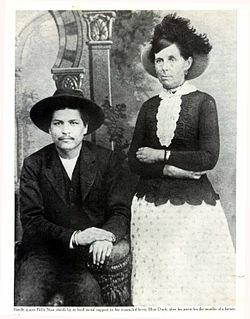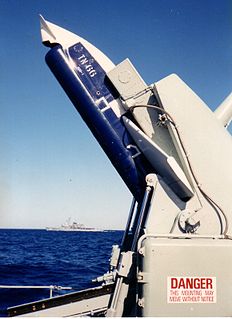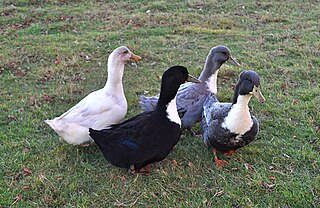This page is based on this
Wikipedia article Text is available under the
CC BY-SA 4.0 license; additional terms may apply.
Images, videos and audio are available under their respective licenses.

The Tadorninae is the shelduck-sheldgoose subfamily of the Anatidae, the biological family that includes the ducks and most duck-like waterfowl such as the geese and swans.

The Australian wood duck, maned duck or maned goose is a dabbling duck found throughout much of Australia. It is the only living species in the genus Chenonetta. Traditionally placed in the subfamily Anatinae, it might belong to the subfamily Tadorninae (shelducks); the ringed teal may be its closest living relative.

The Pacific black duck, commonly known as the PBD, is a dabbling duck found in much of Indonesia, New Guinea, Australia, New Zealand, and many islands in the southwestern Pacific, reaching to the Caroline Islands in the north and French Polynesia in the east. It is usually called the grey duck in New Zealand, where it is also known by its Maori name, pārera.

The Whanganui National Park is a national park located in the North Island of New Zealand. Established in 1986, it covers an area of 742 km² bordering the Whanganui River. It incorporates areas of Crown land, former state forest and a number of former reserves. The river itself is not part of the park.
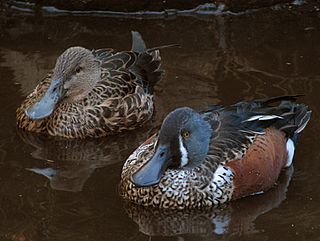
The Australasian shoveler is a species of dabbling duck in the genus Spatula. It ranges from 46–53 cm. It lives in heavily vegetated swamps. In Australia it is protected under the National Parks and Wildlife Act, 1974. They occur in southwestern and southeastern Australia, Tasmania, and New Zealand. The male has a blue-grey head with a vertical white crescent in front of the eyes. The status of the Australasian shoveler is least concern.

The Sedgwick County Zoo is an AZA-accredited wildlife park and major attraction in Wichita, Kansas. Founded in 1971 with the help of the Sedgwick County Zoological Society, the zoo has quickly become recognized both nationally and internationally for its support of conservation programs and successful breeding of rare and endangered species. Having over 2,500 animals of nearly 500 different species, the zoo has slowly increased its visitors and now ranks as the number one outdoor tourist attraction in the state.

The River class was a class of six destroyer escorts operated by the Royal Australian Navy (RAN). Plans to acquire four vessels, based on the British Type 12M frigate, began in the 1950s. The first two vessels had some slight modifications to the design, while the next two underwent further changes. Two more ships were ordered in 1964, following the Melbourne-Voyager collision; these were based on the Type 12I frigate.
The New Zealand stiff-tailed duck is an extinct duck species from New Zealand which is known only from subfossil remains. It was first described as a distinct species by Trevor H. Worthy in 2005.
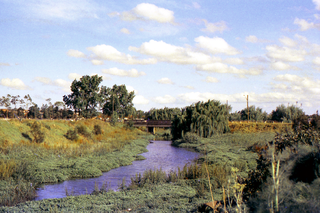
The Duck River is a perennial stream and southern tributary of the Parramatta River, in Sydney, New South Wales, Australia.
The New Zealand musk duck, also known as de Lautour’s duck, is an extinct stiff-tailed duck native to New Zealand. It is only known from subfossil bones. Its closest relative was the living Australian musk duck Biziura lobata, with which it has sometimes been combined.
Teal is a blue-green color.
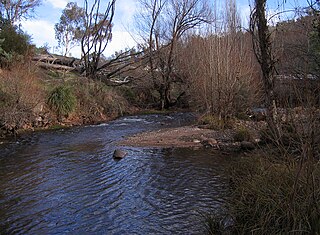
The Cobungra River, a perennial river of the North-East Murray catchment of the Murray-Darling basin, is located in the East Gippsland and alpine regions of Victoria, Australia.
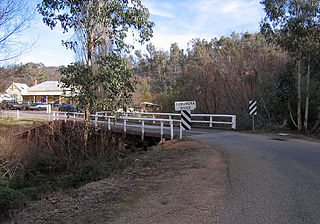
Anglers Rest is a locality in Victoria, Australia. It is on the Omeo Highway, 28.5 kilometres (17.7 mi) north of Omeo in the Shire of East Gippsland, almost totally surrounded by the Alpine National Park. At the 2006 census, Anglers Rest had a nominal population, being counted as part of Omeo.
An arrow is a projectile launched from a bow.
The Elizabeth is a breed of domestic duck, originating in Australia. They were developed as a small, fast growing meat breed in 1972 by Lance Ruting in Merrylands, New South Wales and named after his wife, Ann Elizabeth Ruting. They are presently bred in Australia and New Zealand, but are not wildly available and classified as endangered by the Rare Breeds Trust of Australia.

